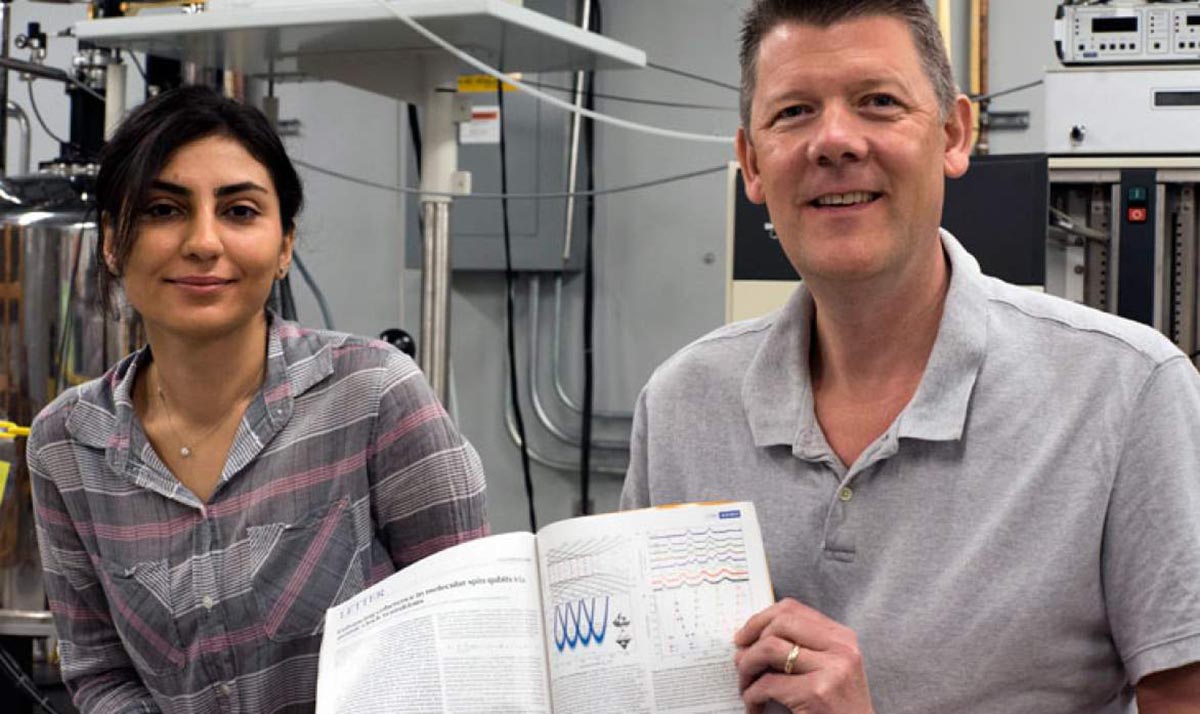Imagine you're a rookie in the major leagues, and you hit a grand slam first time at bat. Or, dressed in a stunning tux or gown only a few months after for your first-ever acting job, you hear your name called following the words, "And the Oscar goes to …"
That's kind of what happened earlier this year to Dorsa Komijani, a graduate student in the National MagLab's Electron Magnetic Resonance (EMR) Facility who published, as joint first author, her first-ever paper this spring — not in just any publication, but in the prominent journal Nature.
Although there are many highly respected scientific journals, most researchers would give their eye teeth to see their names in Nature or Science, generally considered the best of them. It's an especially impressive coup for a scientist so early in her career.
And it never would have happened without the support of EMR Director Stephen Hill. As mentor first to former MagLab grad student Muhandis Shiddiq, the other joint first author on the paper, then to Komjiani, who succeeded Shiddiq, Hill provided critical guidance over the course of several years on the experiments, analysis and writing.
This resulting paper, Enhancing coherence in molecular spin qubits via atomic clock transitions, was no overnight feat. Komijani ran experiments every other weekend for a year at the MagLab, building on months of work by Shiddiq, now a postdoctoral associate at the Technical University in Dortmund, Germany.
"I cannot stress enough," said Hill, "that both Dorsa and Muhandis worked really hard on this. There is no question in my mind that hard work really pays off."
Along the way, Hill dispensed guidance as needed. You have to walk a fine line, he said, when mentoring advanced students who are learning to work as independent scientists.
"It's all about motivating the student and providing questions at the right time," said Hill. "You want them to be able to find things on their own, but you also don't want them to get stuck. It's a difficult balance between those two things."
Komijani could turn to Hill's decades of experience when facing a dead-end. "He inspires you more and more," Komijani said of her supervisor. "I've gained a new perspective on Steve and what it actually means to be a researcher."
Komijani has benefited from other role models, including her parents (both geologists), older brother (a fellow physicist) and colleagues in the EMR Facility. Komijani is one of six grad students and three postdocs working under Hill, who encourages members of his research group to mentor one another.
"Partly to make my life easier," joked Hill. "But it's good for them to critique each other's work before I do … Not only can that favor be returned, but you grow by helping others, as well. I insist that they bounce ideas off each other before they come to me."
A Nature paper is quite a fine feather for any scientist's cap, whether it's one's first publication or, as is the case for Hill, the 185th. Komijani concedes she has set the bar high for herself. There's only one thing to do, she says: Keep working hard.
"We didn't know this would go to Nature," she said. "We knew it was an interesting project, but nobody knew that it could be this big. I think we put in the same amount of effort, no matter which journal it goes to."
By Kristen Coyne



